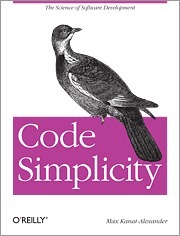What do you think?
Rate this book


80 pages, Paperback
First published January 1, 2012
Having good comments in code is a big part of making it readable. However, you generally should not add comments that say what a piece of code is doing. That should be obvious from reading the code. If it isn’t obvious, the code should be made simpler. Only if you can’t make code simpler should you have a comment explaining what it does.
Programmers who don’t fully understand their work tend to develop complex systems. It can become a vicious cycle: misunderstanding leads to complexity, which leads to further misunderstanding, and so on.
Anger leads to hate. Hate leads to suffering. Suffering leads to re-factoring. [2]